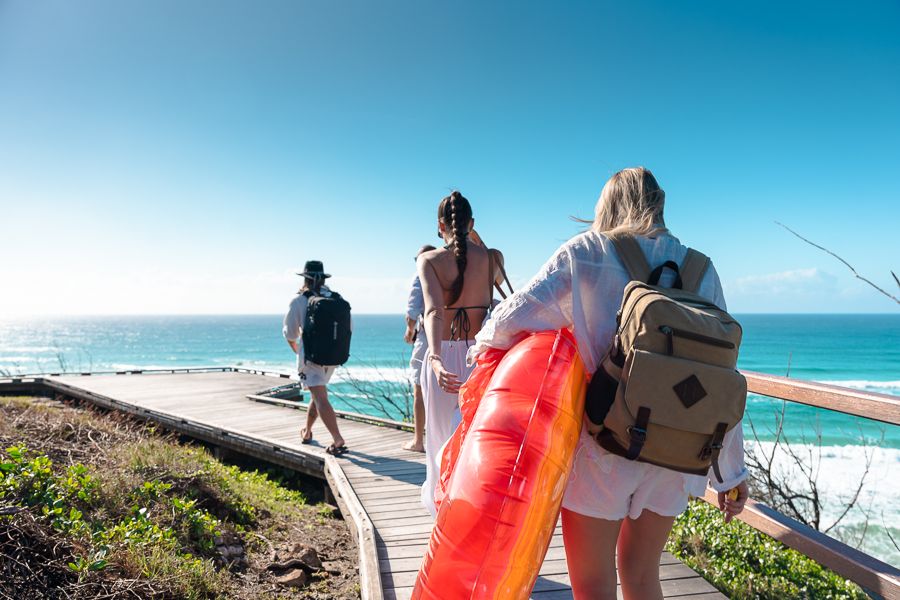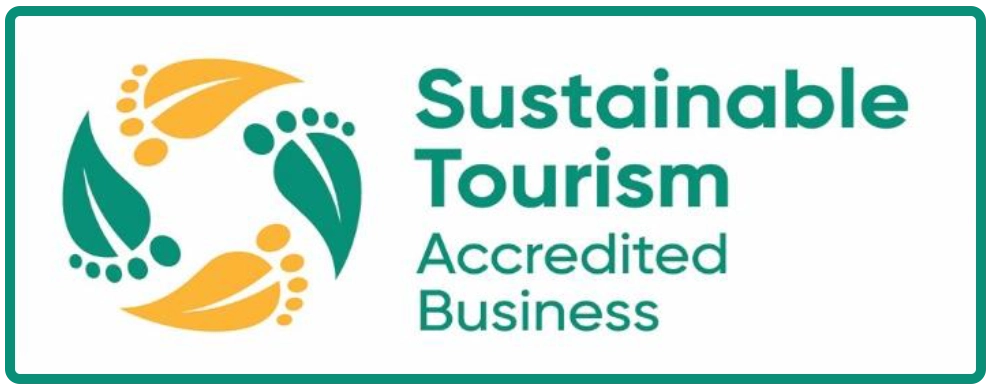Protecting Biodiversity On K'gari
K’gari (Fraser Island) is so much more than a popular tourist destination along the east coast of Australia. It’s also a UNESCO World Heritage site with a delicate natural ecosystem. Home to wild dingos and rare amphibians, ancient rainforests and sprawling sand dunes, freshwater lakes and colourful cliffs, K’gari is one of the most naturally unique places in Australia.
Did you know that K’gari is the largest sand island in the world? Or that it’s the only place in the world where subtropical rainforests emerge directly from the sand? These are just some of the extraordinary qualities that make the island’s ecosystem so special, but fragile too.
Getting to experience this kind of natural beauty comes with great responsibility. Visitors lucky enough to come to K’gari (Fraser Island) need to be especially mindful and help to protect the island's biodiversity. By respecting the island’s flora and fauna, keeping anything unnecessary at home, and leaving no trace, you can help contribute to protecting the island’s delicate environment.

The Biodiversity of K'gari (Fraser Island)
K’gari (Fraser Island) was named a World Heritage site back in 1992, thanks to its natural beauty and impressive ecosystems. For those new to the island’s unique biodiversity, here’s a quick rundown.
Animals
Firstly, K’gari is home to a variety of species, including one of the purest strains of wild dingoes in Australia as well as countless beautiful rainforest birds. The surrounding waters are a sanctuary for dolphins, turtles, and whales, which you might spot while you’re exploring. Plus, the island is home to a wide array of insects, arachnids, and reptiles, all adding to its wild charm!
Ecosystems
The island’s ecosystems are just as diverse as its wildlife, with towering rainforests and expansive sandy shores. On this one island, you’ll find a rare mix of subtropical, temperate, and coastal environments, each playing a vital role in keeping the island’s natural balance intact.
Plants
One of the most impressive features of K’gari is its subtropical rainforest, which grows straight from the sand. The forest is home to massive satinay and brush box trees, and at the heart of it, you’ll find the Valley of the Giants. Here, trees stretch to over 50 metres tall, with trunks as wide as 4 meters! far from K’gari’s rainforest are some of the oldest sand dunes in the world. And just a short distance away, you’ll find some of the oldest sand dunes in the world. It’s easy to see why K'gari is considered such a natural wonder!

Threats to Biodiversity
Unfortunately, while K’gari’s natural wonders are breathtaking, they’re under constant threat due to the island’s delicate biodiversity. While lots of people are keen to visit this dreamy island, tourism can sometimes pose risks to the island - especially when visitors aren’t mindful of the environment.
Check out our most popular K'gari camping tours here!
Littering and leaving things behind
Tourists can cause serious harm to K’gari and its flora and fauna by littering or leaving items behind. Whether it’s plastic waste or food scraps, not making a conscious effort to clean up after yourself and leave no trace can directly harm local wildlife and disrupt delicate ecosystems.

Introducing non-native species
Bringing non-native species like plants or animals onto K’gari can pose a serious threat to the island’s natural ecosystem. This might sound obvious, but it has happened before! Not only can they carry disease, which could in turn infect native species that aren’t equipped to deal with it, but if non-native plants and animals interact with native plants and animals, it could completely upset the natural environment, and irreversibly harm the island’s wildlife. In a recent interview with ABC News, Butchulla biosecurity officer Seth Henaway revealed that at least 200 invasive species have already been found, and some of the island’s more gorgeous landscapes were already feeling the effects. So keep the pets at home, okay?

Getting too close to wildlife
Visitors can also cause harm to the island by getting too close to the wildlife there - particularly the wild dingos. It goes without saying that getting too close to a dingo is dangerous for humans, as these creatures are wild predators. But even if you’re feeling particularly brave, getting in a dingo’s space is a big no-no as it can hurt them too. Dingos are a protected species on K’gari and if their natural habits or eating patterns are disrupted, it can be harmful to them and their pack. You can learn more about dingo safety on K'gari in our handy guide.

How Visitors Can Protect K'gari (Fraser Island)
If you’re planning to visit this breathtaking island, there are some key things you can do before, during, and after your stay to make sure you’re doing your part to protect K’gari.
-
Don’t bring anything foreign over to the island that could affect the natural biodiversity
-
If you’re driving over to K’gari, make sure your car tyres are reasonably clean and free of any dirt that could carry harmful pesticides
-
Stay on designated paths and keep a respectful distance from wildlife and their habitats
-
Use environmentally friendly products when possible and recycle everything you can
-
Take any litter back with you to the mainland














